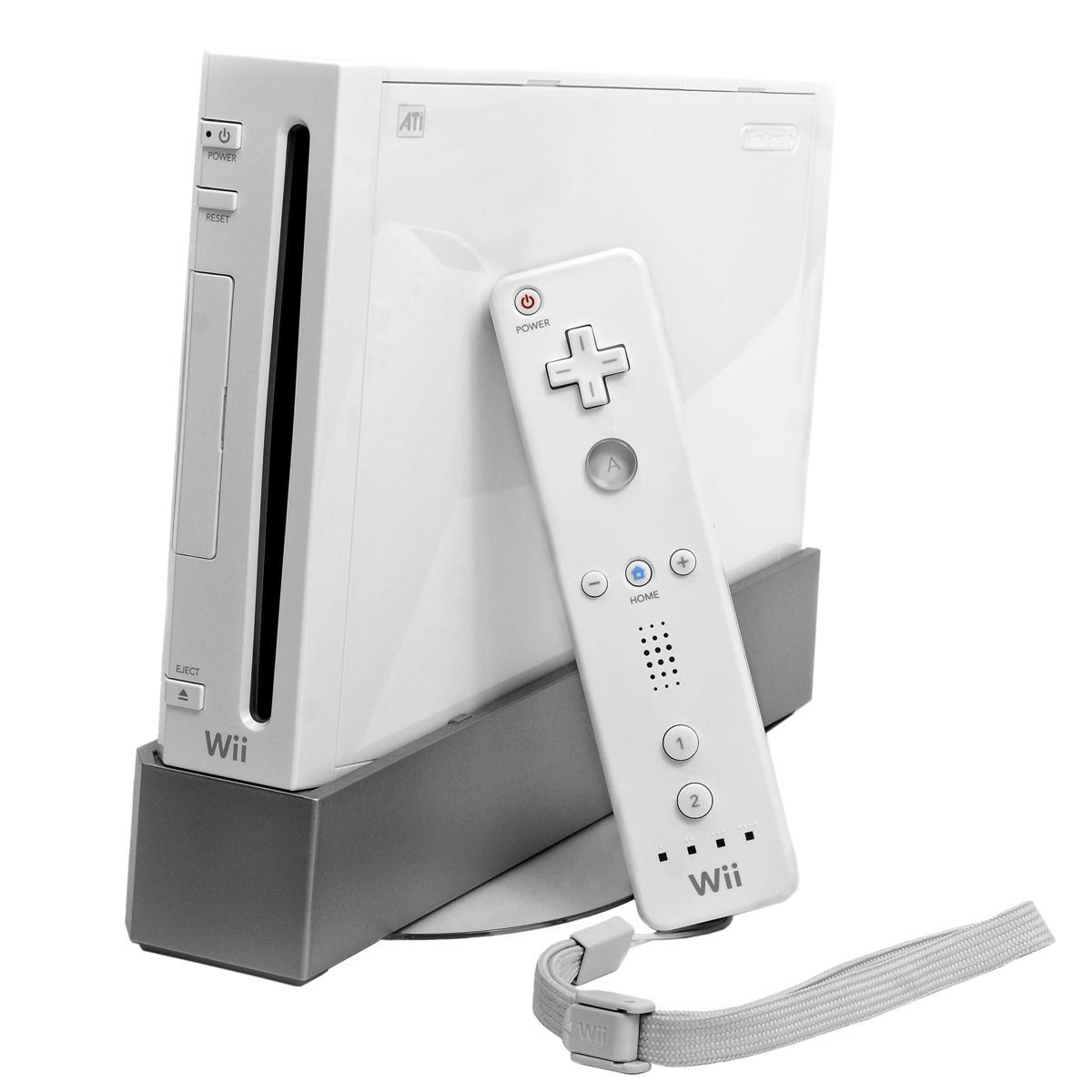The Wii: Revolutionizing Gaming Forever
As technology continues to advance at an exponential rate, gaming consoles have become a staple in households around the world. One console, in particular, stands out as a revolutionary breakthrough in the gaming industry – the Wii. Released on November 19, 2006, the Wii captivated both hardcore gamers and casual players alike with its innovative motion-controlled gameplay and unprecedented level of user interaction.
Nintendo, the company behind this game-changer, had the vision to create an inclusive gaming experience that transcended age, gender, and gaming expertise. Unlike its competitors at the time, the Xbox 360 and PlayStation 3, the Wii introduced a completely unique control system known as the Wii Remote (often referred to as the Wiimote). This wireless wand-like controller allowed players to physically mimic their in-game actions by swinging, pointing, and gesturing.
The introduction of the Wii Remote opened up a whole new world of possibilities. The gaming landscape was no longer limited to button-mashing or joystick manipulation. Instead, players could swing a virtual tennis racket, cast a fishing line, or even conduct a virtual orchestra with the flick of their wrist. Such intuitive and interactive gameplay was a massive leap forward, attracting gamers who had never before considered themselves part of the gaming community.
Nintendo’s approach to game development for the Wii mirrored its philosophy of accessibility and inclusivity. The console featured a broad range of family-friendly titles that appealed to players of all ages. Whether seniors were testing their mental agility with brain-training games or toddlers were gleefully playing with virtual pets, the Wii catered to a wide demographic, transcending generation gaps and fostering connections among family members.
The Wii’s release marked a turning point in the gaming industry. It challenged the prevailing notion that gaming was a solitary, isolated activity, instead paving the way for social interactions within the gaming world. Friends and family members could come together in the living room, swinging their Wii Remotes and engaging in friendly competitions. Multiplayer games like Mario Kart Wii and Wii Sports became the go-to choice for social gatherings, replacing traditional board game nights with exciting virtual races and epic tennis matches.
As the years rolled on, the Wii continued to evolve, bringing forth a host of peripherals like the Wii Balance Board and Wii MotionPlus, enhancing the already immersive gameplay experience. Despite the eventual release of more advanced consoles, the Wii’s impact on the gaming industry remains unparalleled. It challenged preconceived notions, opened doors to new players, and revolutionized how we perceive gaming as a whole.
So, if you’re ever in the mood for a trip down memory lane or want to see firsthand the console that forever changed the gaming landscape, look no further than the release date of November 19, 2006. The Wii will always hold a special place in the hearts of gamers worldwide and will remain a living testament to the power of innovation and inclusivity.
More About : When Did The Wii Come Out
Introduction:
The Wii, a groundbreaking gaming console developed by Nintendo, was released on November 19, 2006. With its innovative motion-sensing controllers and family-friendly approach, the Wii quickly became a sensation in the gaming industry. This article explores the launch of the Wii, its impact on the gaming market, and its enduring legacy.
1. Development of the Wii:
a. Introduction to the concept: Nintendo aimed to create a console that would appeal to a wider audience, including casual gamers and families.
b. Design and technology: The Wii introduced a unique motion-sensing controller called the Wii Remote, which revolutionized gameplay by allowing players to interact with games more intuitively.
c. Collaboration and innovation: Nintendo partnered with other game developers to expand the Wii’s library of games, ensuring a diverse range of titles for players to enjoy.
2. Launch of the Wii:
a. Release date and regions: The Wii debuted on November 19, 2006, first in North America, followed by Japan, Australia, and Europe.
b. Initial reception: The Wii received immense hype prior to its launch, generating excitement among gamers of all ages.
c. Sales and popularity: The Wii’s affordable price point, coupled with its unique features and family-oriented games, contributed to an extraordinary demand, resulting in worldwide shortages.
3. Impact on the Gaming Market:
a. Expanding the gaming audience: The Wii successfully attracted non-traditional gamers, including older adults and families, who were often overlooked by the gaming industry.
b. Changing perceptions: The introduction of motion controls challenged the conventional notion of gaming and paved the way for more interactive and immersive gameplay experiences.
c. Market competition and response: Competitors such as Sony and Microsoft introduced their own motion-sensing controllers in response to the Wii’s unprecedented success, leading to a new era of motion gaming.
4. Enduring Legacy:
a. Cultural impact: The Wii’s intuitive gaming experience brought families and friends together, fostering social interactions and creating lasting memories.
b. Continued support: Nintendo continued to release new games and accessories for the Wii, ensuring its longevity even after the launch of its successor, the Wii U.
c. Nostalgia and collectability: Years after its release, the Wii remains a beloved console among gamers, and its games and accessories are sought after by collectors around the world.
Conclusion:
The release of the Wii in 2006 marked a pivotal moment in the gaming industry. Its innovative motion-sensing controllers, family-friendly games, and affordable price point allowed Nintendo to captivate a broader audience and bring gaming into the mainstream. Despite the passage of time, the Wii’s influence continues to resonate, leaving an indelible mark on both the gaming industry and the nostalgic memories of countless players.
FAQs on When Did The Wii Come Out
Q: When did the Wii come out?
A: The Wii was first released on November 19, 2006.
Q: What was the Wii’s successor?
A: The Wii’s successor is the Wii U, which was released on November 18, 2012.
Q: Did the Wii support high-definition graphics?
A: No, the Wii was not capable of displaying high-definition graphics. It was designed to support only standard definition resolutions.
Q: Were Wii games backward compatible?
A: Yes, the Wii was backward compatible, meaning it could play GameCube games as well.
Q: How many units of the Wii were sold worldwide?
A: As of 2021, Nintendo sold over 101 million units of the Wii worldwide, making it one of the best-selling video game consoles of all time.
Q: Did the Wii have online functionality?
A: Yes, the Wii did have online functionality. It allowed users to play games online and access various online features and services.
Q: What were the unique features of the Wii console?
A: The Wii introduced motion-sensing controllers, called Wii Remotes, that allowed players to physically interact with games through gestures and movements.
Q: Were there any special editions of the Wii console?
A: Yes, Nintendo released special editions of the Wii, such as the limited-edition red Wii and the black-colored Wii Family Edition.
Q: What was the best-selling game for the Wii?
A: Wii Sports holds the title of the best-selling game for the Wii, with over 82 million copies sold worldwide.
Q: Is the Wii still being produced?
A: No, the production of the Wii console ended in 2013 as its successor, the Wii U, was already in the market.




